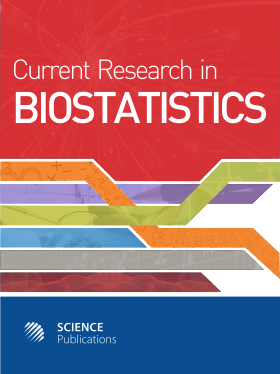Correlation Between Dispersion and Mean Toassess Healthcare Servicee Fficiency
- 1 Texas State University-San Marcos, United States
Abstract
Motivation for this research work started while helping a hospital administrator to assess whether patient oriented activity duration, X≥0 is reflecting the service’s efficiency? Higher value of the sample mean duration, X implies lesser productivity in the hospital and more healthcare cost. Likewise, larger value of sample dispersion, sx2 in the service durations is an indicator of lesser reliability and inefficiency. Of course, the dispersion, sx2 in a healthcare hospital operation could be due to diverse medical complications among patients or operational inefficiency. Assuming that it is not the diverse medical complications of patients, how should the pertinent information from data be extracted, quantified and interpreted to address inefficient operation? This is the problem statement for discussion in this article. To be specific, in an inefficient hospital operation, the sample dispersion and mean of service durations are likely to be highly correlated. Their correlation is a clue to identify an inefficient operation of a hospital. To compute the correlation, currently there is no appropriate formula in the literature. The aim of this article is, therefore, to derive a working formula to compute the correlation between sample dispersion and mean. The dispersion is too valuable statistical measure to quickly dispense, not only in healthcare operations but also in engineering, economics, business, social or sport applications. The approach starts first in quantifying a general relationship between the dispersion and mean in a given data. This relationship might range from a linear to a quadratic, cubic or higher degree. Suppose that the dispersion, σ2 is a function, f(µ)of the mean, µ of patient oriented activity durations. Specific functionality depends on the frequency pattern of the data. The tangent at a locus of their relationship curve is either declining or inclining line with an angle θ whose cosine value is indeed the correlation between the mean, x and dispersion, sx2. An expression to compute the angle is nowhere seen in the literature. Therefore, this article derives a general expression based on geometric concepts and then obtains specific formula for several count and continuous distributions. These expressions are foundations for further data analyses. To initiate, promote or maintain an efficient service operation for patients in a hospital, practical strategies have to be formulated based on the cluein the form of correlation value. For this purpose, a one-to-one relationship between sample dispersion and mean could be utilized to improve the service efficiency. In this process, a formula is developed to check whether the model parameters are orthogonal. The curvature and the shifting angle in the relationship between dispersion and mean are captured when the mean changes one unit. Both Poisson and exponential distributions are illustrated to comprehend the concepts and the derived expressions of this article. Efficient healthcare service is a necessity not only in USA but also in other nations because of an escalating demand by medical tourists in this era of globalized medical treatment. A reformation to the entire healthcare field could be achievable with the help of biostatical concepts and tools. To extract and comprehend pertinent data information in the patient oriented activity durations, the correlation is a tool. The data information holds the key to make the much needed reformation and operational efficiency. This article illustrates that the correlation between the data mean and dispersion provides clues. The correlation helps to assess healthcare service efficiency as it is demonstrated in this article with data. Similar applications occur in engineering, business and science fields.
DOI: https://doi.org/10.3844/amjbsp.2011.36.43

- 5,471 Views
- 3,144 Downloads
- 0 Citations
Download
Keywords
- Data Mean and Dispersion
- Curvature
- Healthcare Management
- Shifting Angle
